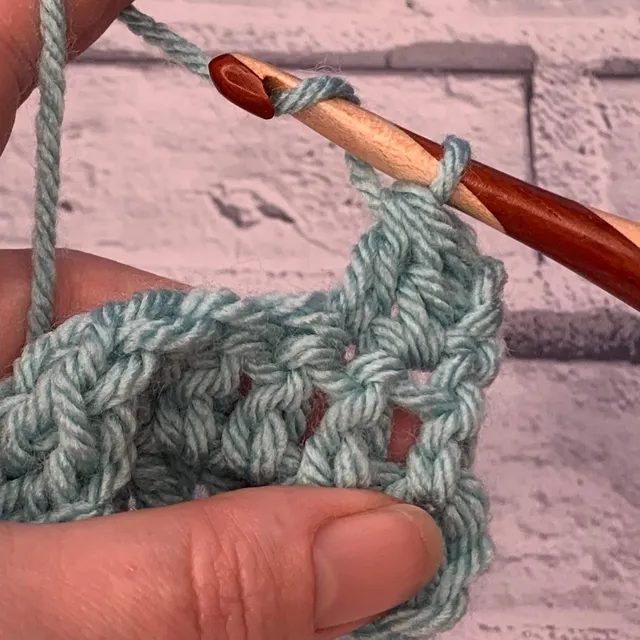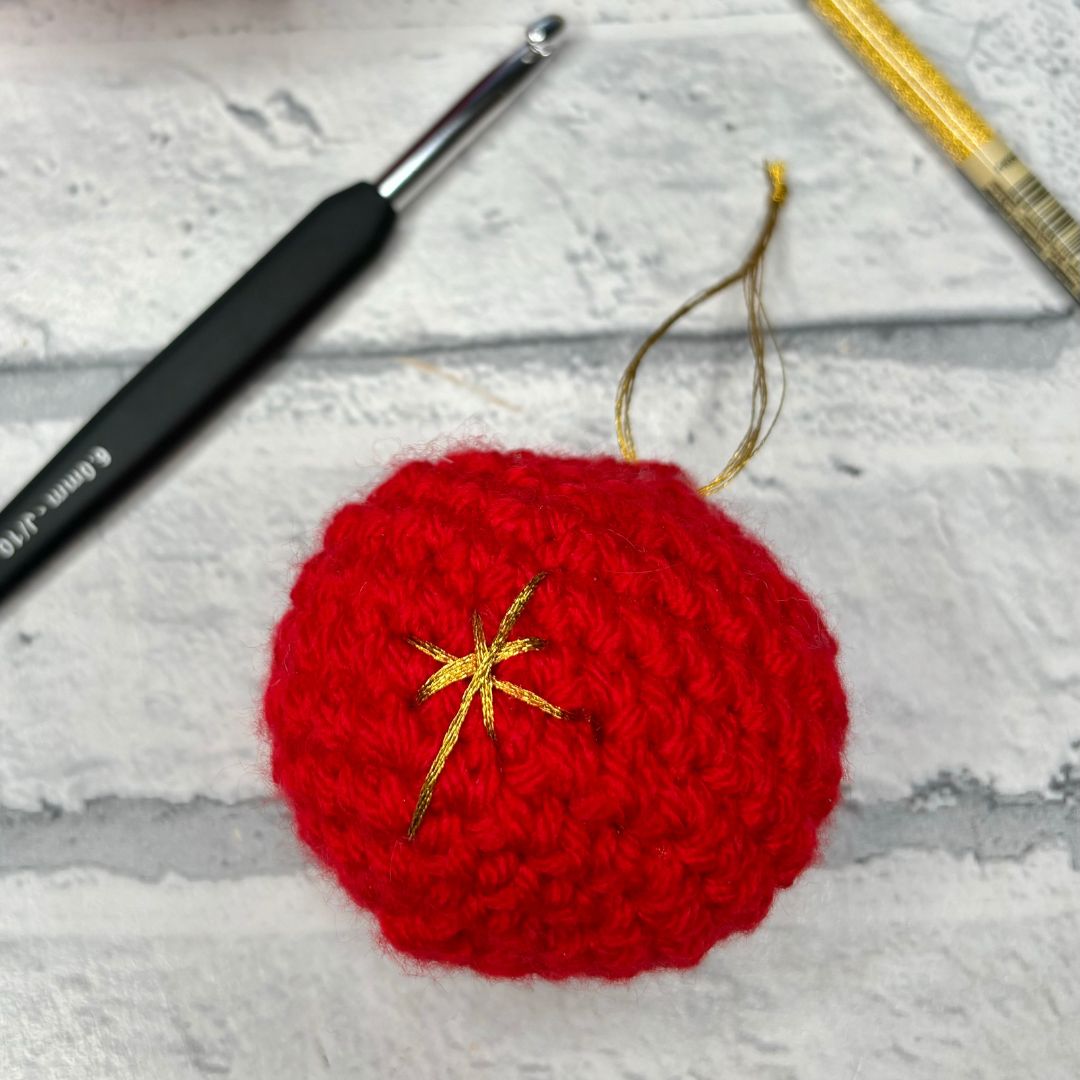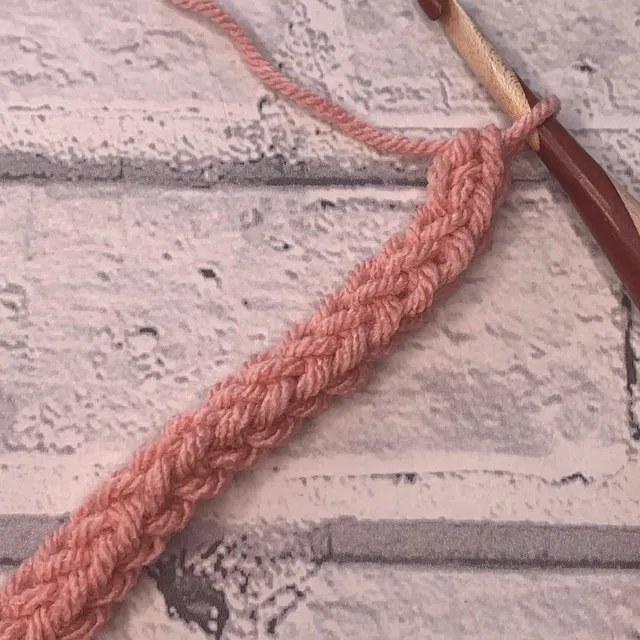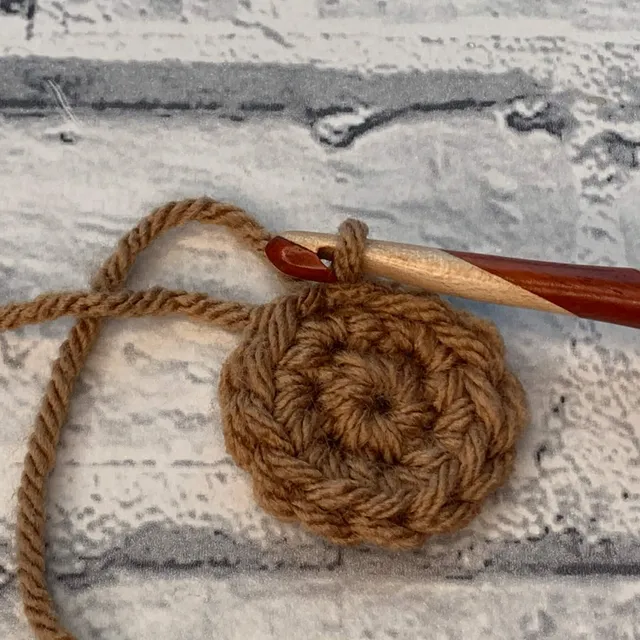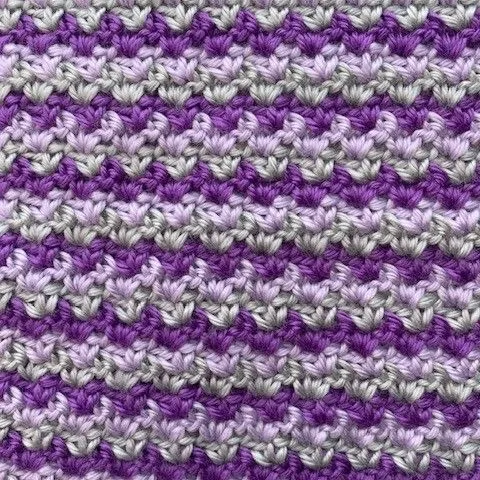Types of Yarn Fiber Explained
Discover the different types of crochet yarn and types of yarn fiber. You’ll learn about how the different yarn fibres are categorised from natural yarn fibers through to synthetic and manmade fibers.
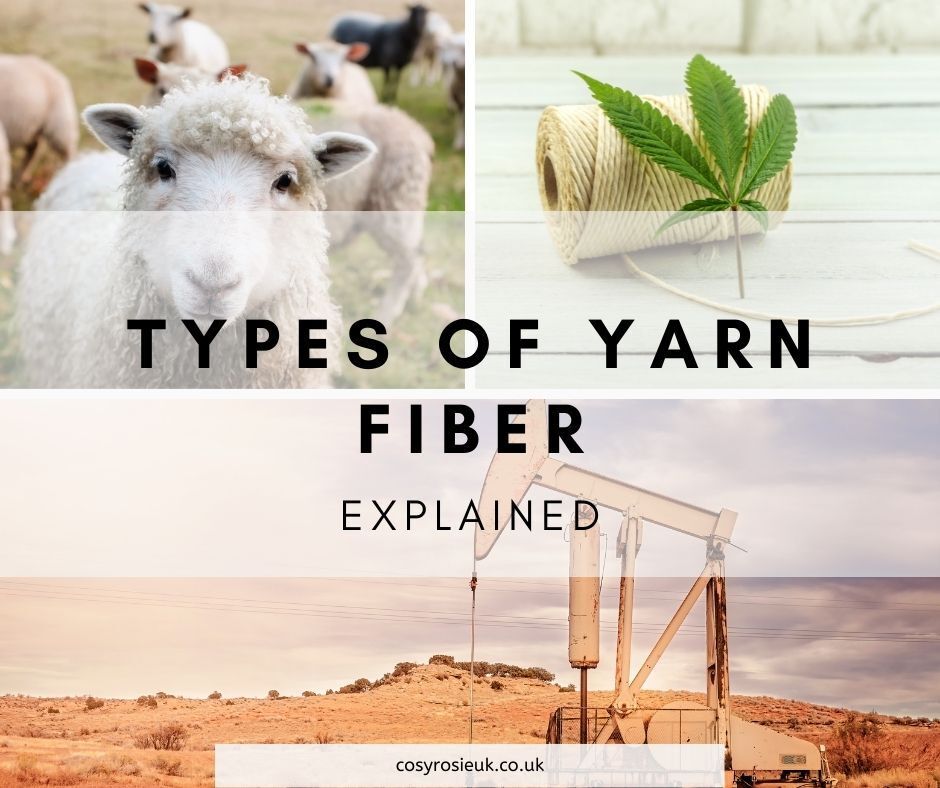
Types of Yarn Fiber Explained
Crochet yarn can be made from lots of different types of fiber and in this yarn fibre series, you will learn more about the most commonly used yarn fibers in detail.
In this article, you will discover the 3 main yarn fibers categories, along with each sub category too.
Over the coming weeks, each fiber will be discussed in detail to allow you to learn more about:
- How the fiber is created
- The fibers characteristics including:
- strength
- softness/feel
- appearance
- recommended crochet projects
You will also find information about:
- spinning techniques
- extraction processes
- fiber history
All this information will allow you to select yarns when shopping, knowing more about how your fiber choice can impact on your finished project.
Please note that some of the links in my blog are affiliate links. I may earn a small commission if you purchase via this links, but the price you pay is not affected
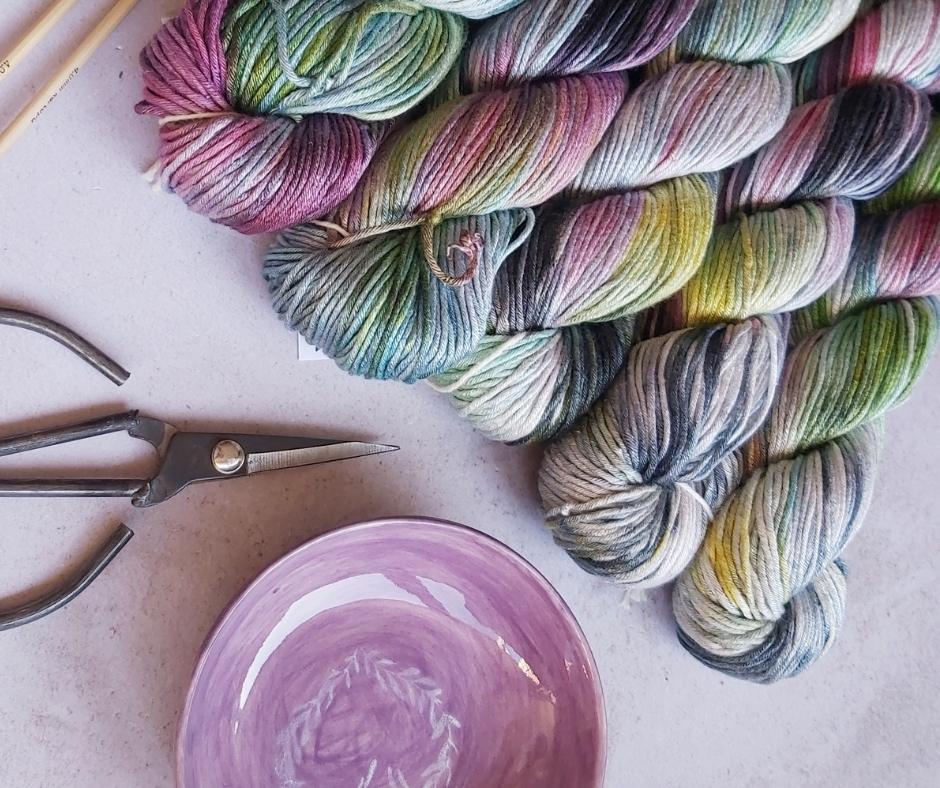
Note: Remember that all yarn fibre types and yarn fibre blends are available in a multitude of yarn weights. Yarn weight relates to the thickness of the yarn – find a downloadable yarn size chart that shows all the yarn weights in the Yarn Substitution Chart
Yarn Fiber Types & Categories
All yarn fibre types can be divided into 2 major categories:
- Natural fibre yarns
- Manmade fiber yarns
These are then divided into sub categories, and further sub categories within those. Don’t worry, you’ll find an easy to read chart below that shows how the yarn fibers are divided.
Natural Fibers | Types of Yarn Fiber Explained
Natural yarn fibers are made from naturally occurring materials, such as animal hair or plant material.
Both animal fibers and plant fibres have been used since man existed to provide warmth and for use as utensils.
Animal Fibers
Animal fibres are known for keeping warmth in, and being moisture resistant, but many people find sheep wool itchy against the skin.
Commonly Used Animal Fibres:
- Sheep’s wool
- Alpacca
- Cashmere
- Mohair
- Silk
Plant Fibers
Plant yarn fibers aren’t as warm as animal fibers, but can be stronger and more breathable.
Commonly used Plant Fibers:
- Cotton
- Hemp
- Raffia
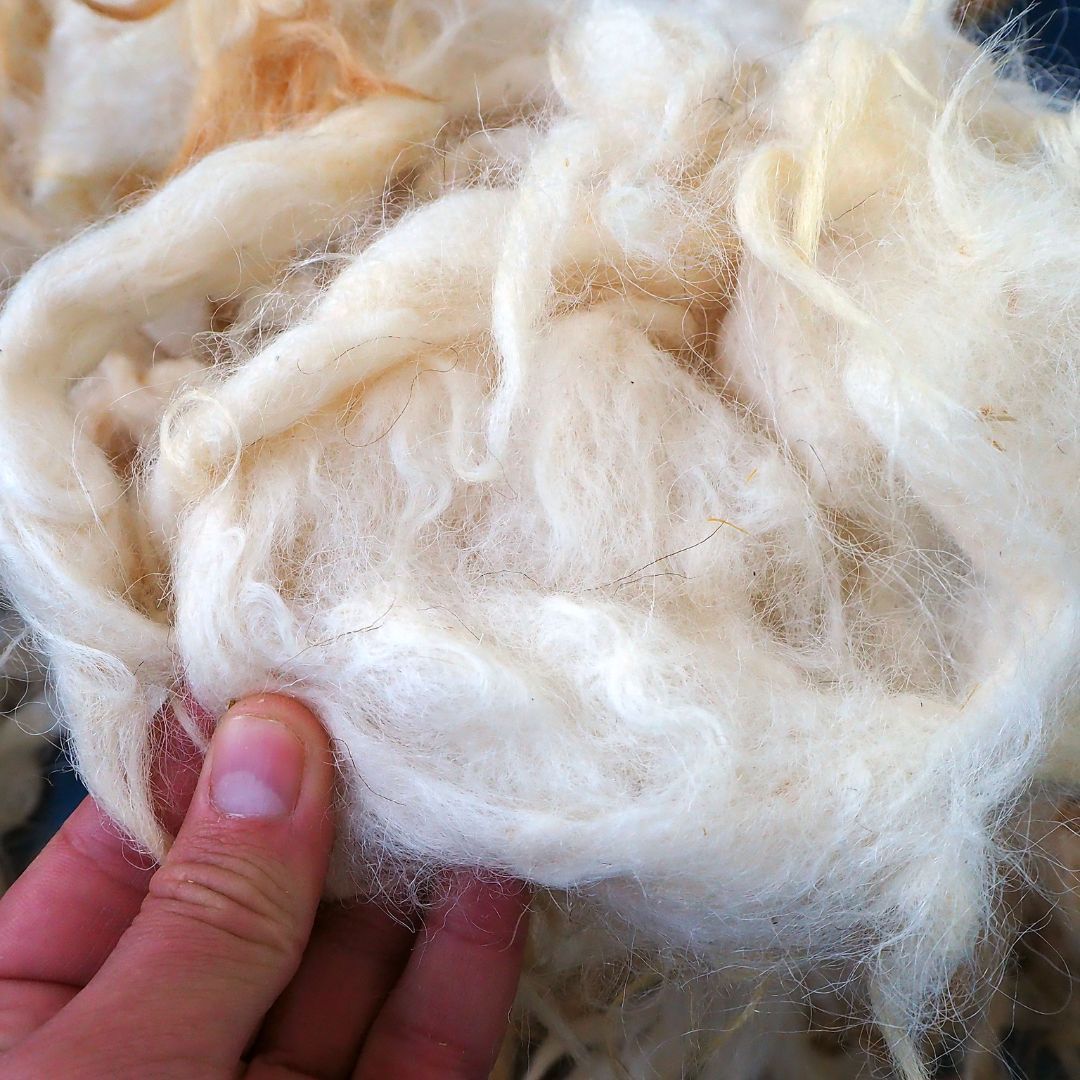
Manmade Fibers | Types of Yarn Fiber Explained
Manmade Fibers (synthetic yarn) were created to replicate many natural yarn fibers but without the shrinkage issues that can be seen with natural fibres.
Synthetic yarn tends to be lower in cost than natural yarn, as they are chemically produced, so no wait time for growing or producing the fibre is required.
Manmade fibres and synthetic fibres are subdivided into 2 further categories:
- Synthetic Polymers
- Natural Polymers
Natural polymers are made with natural fibres which are processed with chemicals to create the yarn fibre strands.
Commonly Used Synthetic Polymers :
- Acrylic
- Nylon
- Polyester
Commonly Used Natural Polymers:
- Bamboo
- Rayon
- Lyocell
Types of Yarn Fibre Category Chart
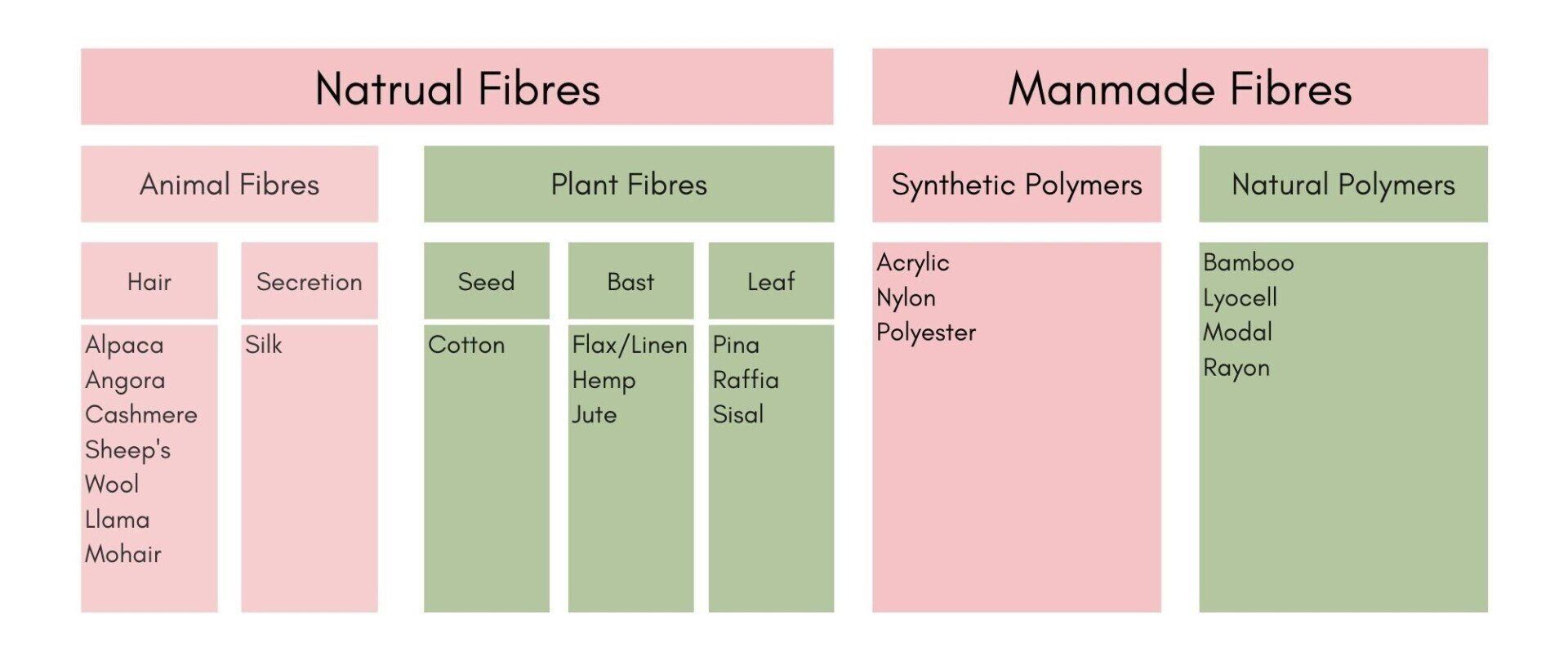
How to find the yarn fiber content
The yarn band of skein wrap gives us so much information about the yarn we are using:
- Yarn weight
- Recommended hook size
- Tension guide
- Length of yarn in the skein
- Yarn fibre and blend
If you are unfamiliar with how to understand a yarn band, click here to read more.
We can not rely on the brand name of a yarn to assume that it contains 100% of any fiber. Simply check the information on the band to confirm the yarn’s fiber content.
The fibre content will be listed with the highest percentage of fibre first if it is blended, just like ingredients in food. For example:
- Stylecraft Naturals Bamboo Cotton (60% Bamboo, 40% Cotton)
There is also something called a burn test that will check the fibre content. I will be sharing more on this “testing” process later in the series.
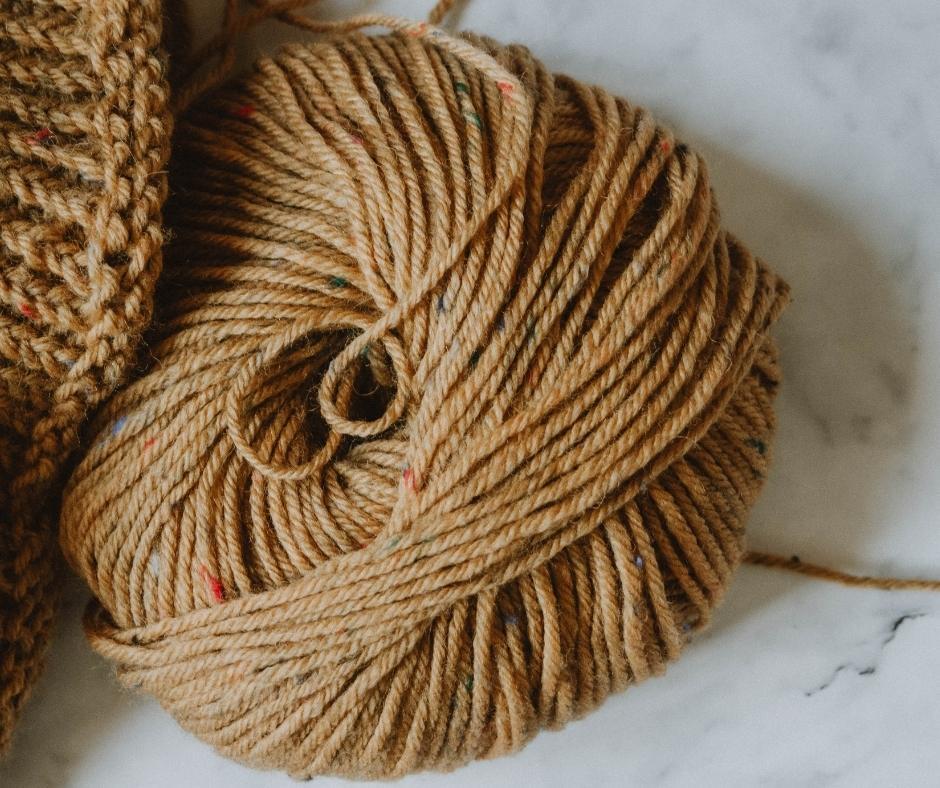
If you’ve enjoyed this introduction to yarn fibers, makes sure you book mark this page and subscribed to my YouTube Channel. This series will be expanding to include so much information on yarn fibres. From the best yarn fibre to use with blankets through to the best yarn for baby projects.
I can not wait to share more information on some of the yarn spinning processes along with raising some ethical questions surrounding some of the “eco-friendly” yarns available on the market.
